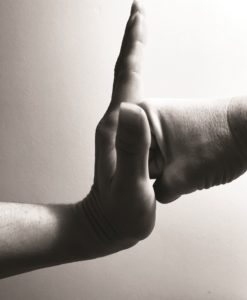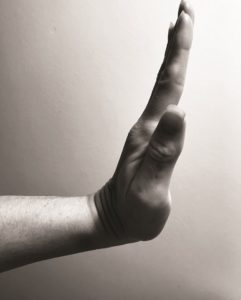Wrist pain. Every yoga teacher hears about it, and from all kinds of students — seasoned athletes and deskbound writers alike. I’ve had it, too. I think we’ve all paid too little attention to these delicate joints.
We are used to forcing our wrists to adapt to our circumstances. Whether in hours of typing, bursts of push-ups, or quietly held planks, our wrists get forced into 90-degree angles day in and day out.
“On hands and knees, put your hands underneath shoulders, knees under hips. Line the crease of your wrist up with the top of your mat.” That’s what I told folks to do for years to get into tabletop position. Yikes. The idea that the average human has the range of motion in their wrists to come into a 90-degree angle is woefully inaccurate.

What’s missing is an understanding of range of motion and how to warm up the joints appropriately to strengthen the joint through that range.
It’s important to understand the difference between range of motion and flexibility. Often, when we talk about flexibility, what we really mean is passive flexibility. That is, using an outside force, like your hands, or gravity, or a wall, to push yourself into a shape.
But if you are looking to strengthen a joint, to alleviate wrist pain before a yoga class or after a day at the keyboard, you need to first find your active, or controlled, range of motion — the range of motion in which you can hold and control your wrist and hand.
To find it, extend your arm and flex your wrist without pressing anything against it. Trying to pull your fingers back towards your forearm, moving towards 90 degrees as much as possible, but without applying any outside force.

Next, give resistance. With your other hand or against a wall, push gently on your palm. At the same time, push your palm against that hand or wall, resisting against it. Pause. Then find your active range of motion again. Pause. Then repeat the whole process over again.
This will feel like a workout for your forearms, even though these movements are small and gentle. They work to develop the capacity for controlled range of motion, which is excellent for joint health over time, aiding in injury prevention and in increased capacity for movement.
Find your wrist’s range of motion and actively play with it to warm up for your online yoga or workout class, for holding up trays of hors d’oeuvres for your Zoom holiday cocktail parties, or before competing in Major League Dreidel. Whatever the holiday season brings!



